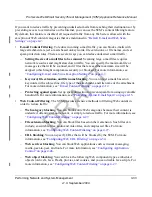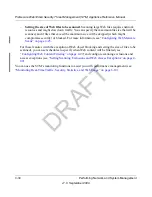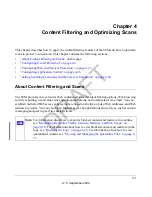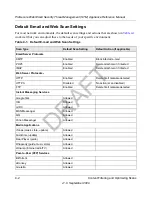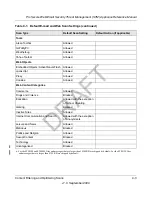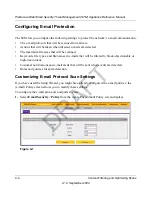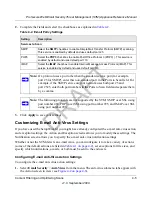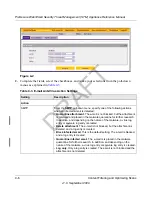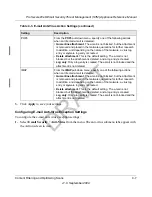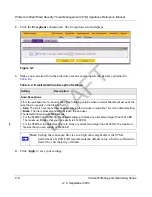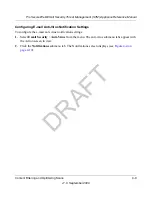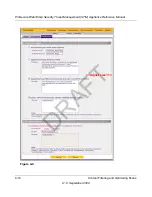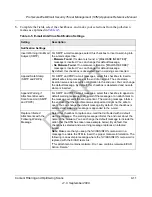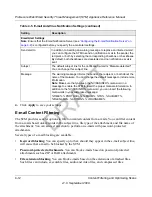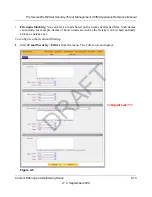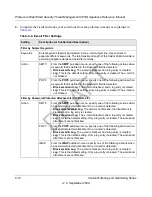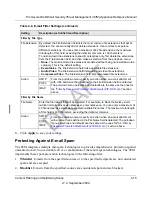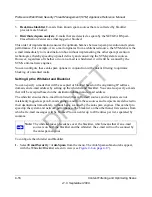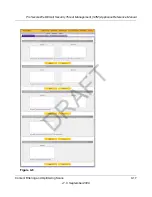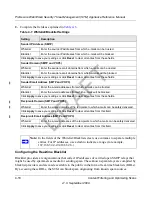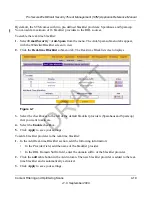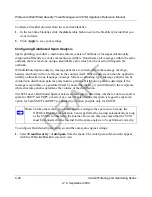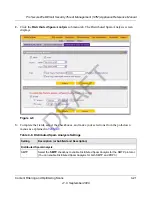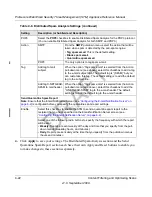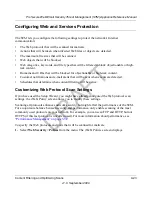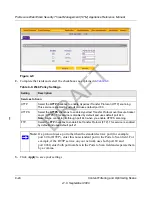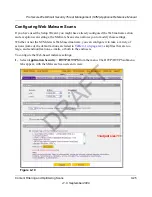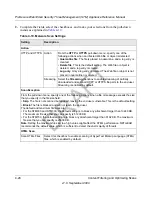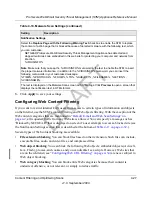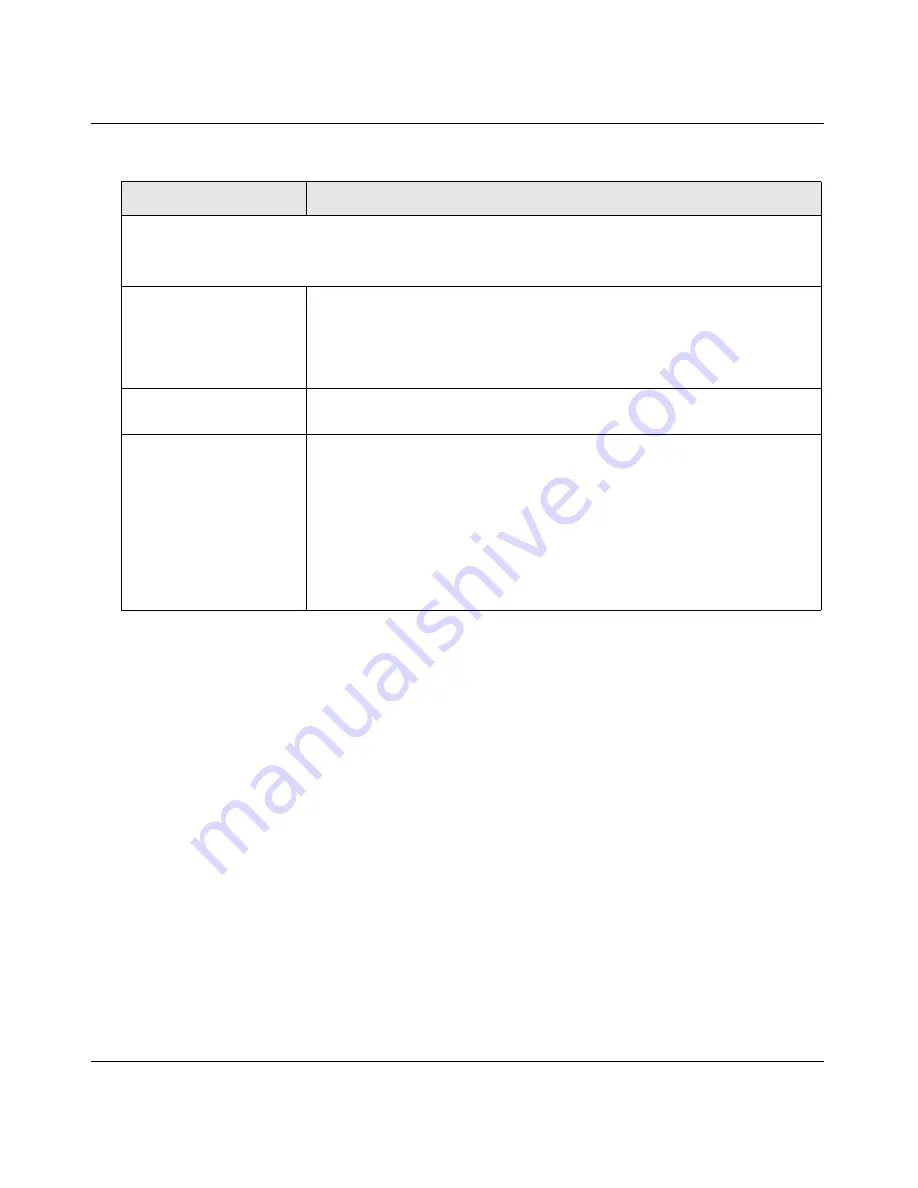
ProSecure Web/Email Security Threat Management (STM) Appliance Reference Manual
4-12
Content Filtering and Optimizing Scans
v1.0, September 2009
4.
Click
Apply
to save your settings.
E-mail Content Filtering
The STM provides several options to filter unwanted content from e-mails. You can filter content
from e-mails based on keywords in the subject line, file type of the attachment, and file name of
the attachment. You can also set an action to perform on e-mails with password-protected
attachments.
Several types of e-mail blocking are available:
•
Keyword blocking
. You can specify up to that, should they appear in the e-mail subject line,
will cause that e-mail to be blocked by the STM.
•
Password-protected attachments
. You can block e-mails based on password-protected
attachments such as ZIP or RAR attachments.
•
File extension blocking
. You can block e-mails based on the extensions of attached files.
Such files can include, executable files, audio and video files, and compressed files.
Email Alert Settings
Note
: Ensure that the Email Notification Server (see
“Configuring the E-mail Notification Server” on
page 6-2
) is configured before you specify the e-mail alert settings.
Send alert to
In addition to inserting an warning message to replace an infected e-mail,
you can configure the STM to send a notification e-mail to the sender, the
recipient, or both by selecting the corresponding checkbox or checkboxes.
By default, both checkboxes are deselected and no notification e-mail is
sent.
Subject
The default subject line for the notification e-mail is “Malware detected!”
You can change this subject line.
Message
The warning message informs the sender, the recipient, or both about the
name of the malware. You can change the default message to include more
information.
Note
: Make sure that you keep the %VIRUSINFO% meta word in a
message to enable the STM to insert the proper malware information. In
addition to the %VIRUSINFO% meta word, you can insert the following
meta words in your customized message:
%TIME%, %PROTOCOL%, %FROM%, %TO%, %SUBJECT%,
%FILENAME%, %ACTION%, %VIRUSNAME%.
Table 4-5. E-mail Anti-Virus Notification Settings (continued)
Setting
Description
DRAFT


